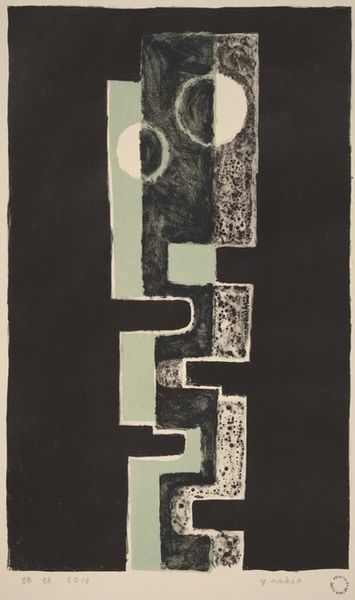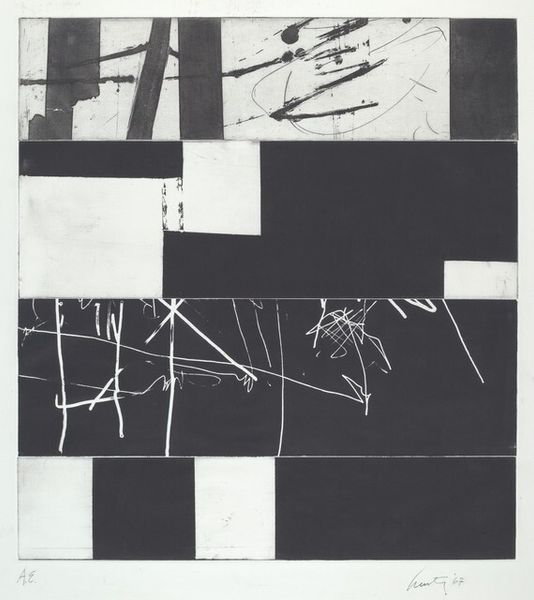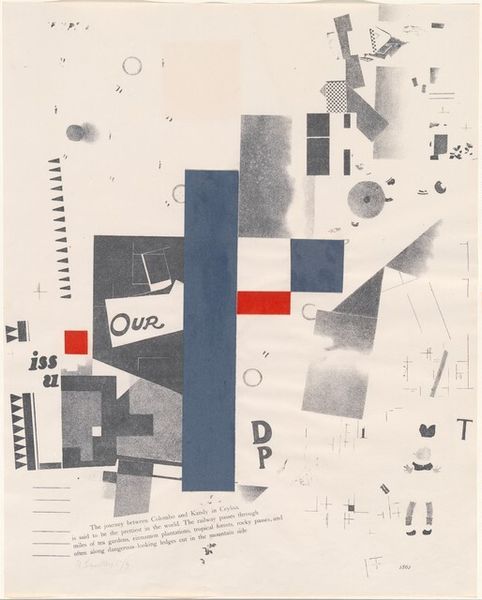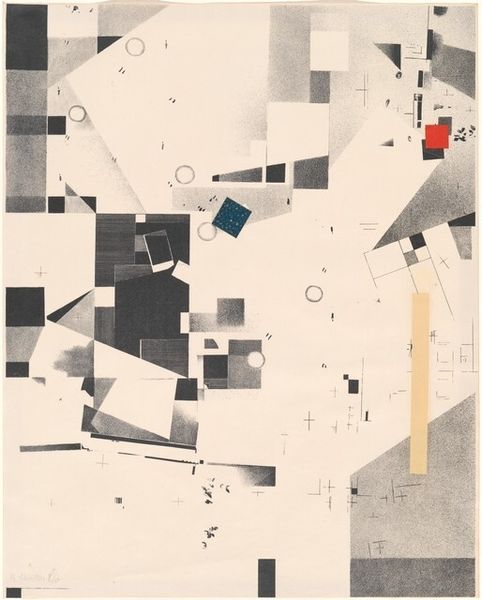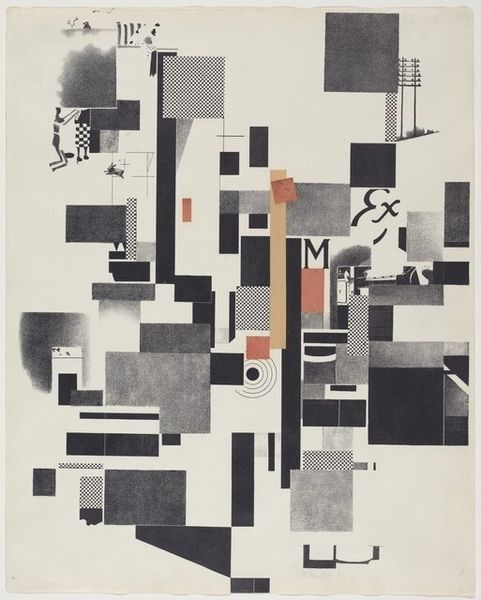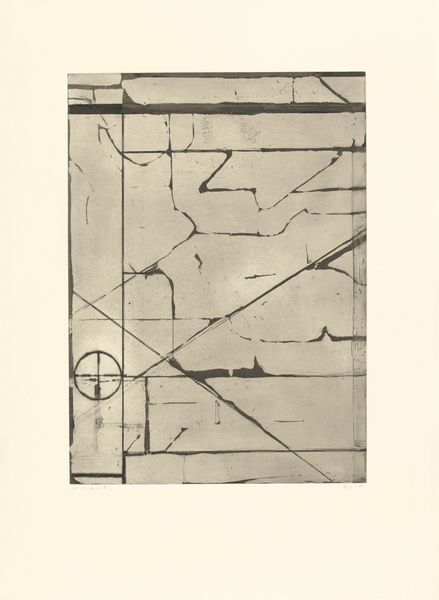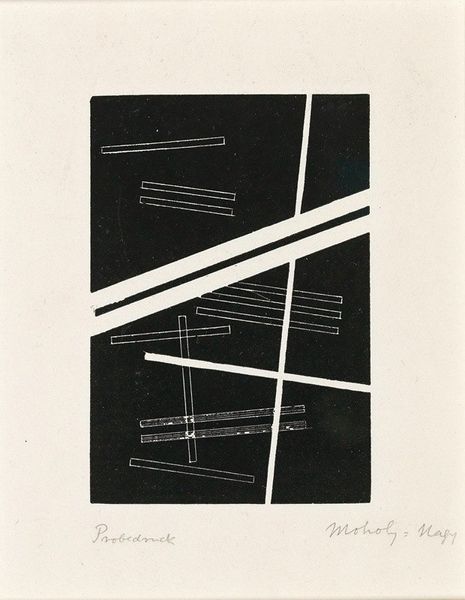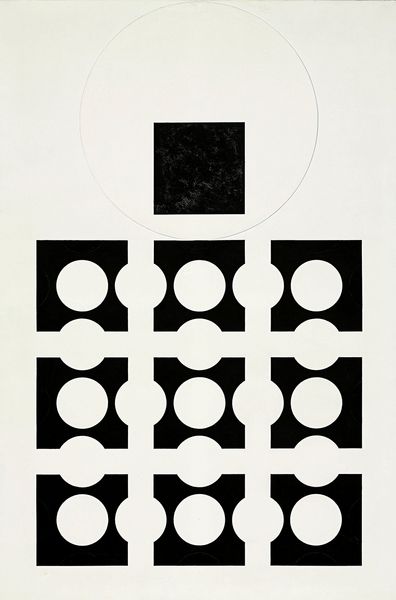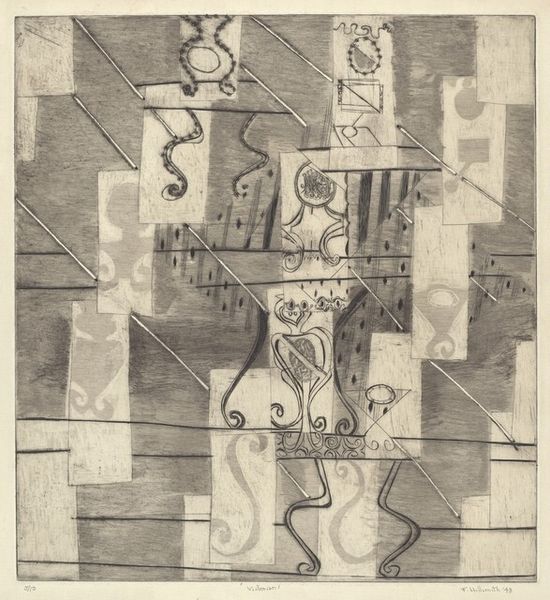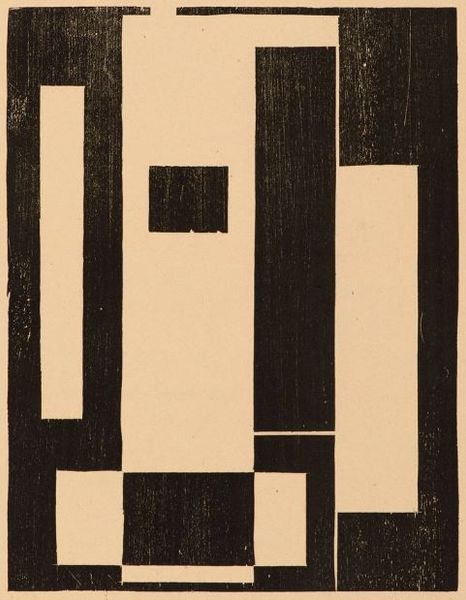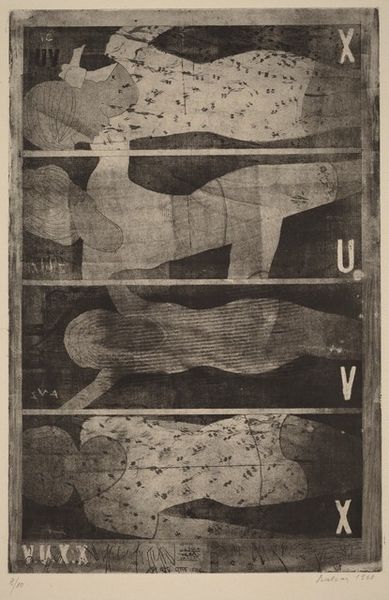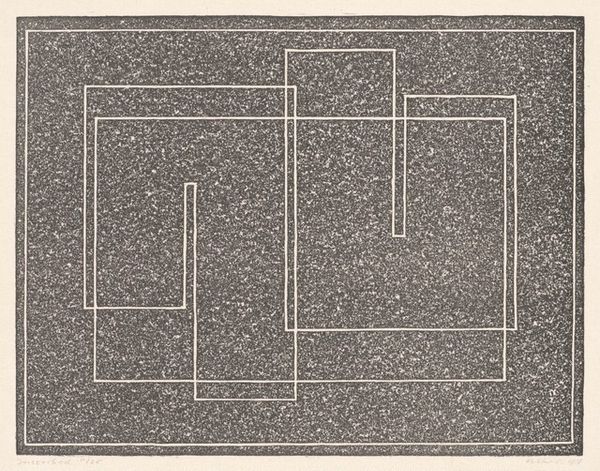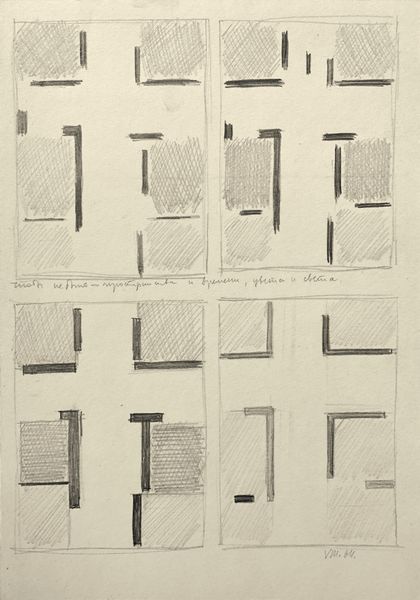
collage, print, typography
#
collage
# print
#
typography
#
typography
#
dada
#
geometric
#
abstraction
Dimensions: overall: 56 x 44.5 cm (22 1/16 x 17 1/2 in.)
Copyright: National Gallery of Art: CC0 1.0
Curator: Welcome. We are looking at “Merz 3 (0/4)” crafted in 1923 by Kurt Schwitters. This work is a collage, incorporating print and typography elements characteristic of the Dada movement. Editor: Initially, my impression is one of structured chaos. There’s a rhythmic quality to the arrangement of geometric shapes and fragmented text, but simultaneously a feeling of disruption and deliberate asymmetry. Curator: Indeed, that "chaos" is precisely the point. Dada sought to dismantle established norms following the trauma of World War I. Schwitters' "Merz" collages, though intensely personal, were his contribution to this rebellion against order, rationality, and the bourgeois values he saw as complicit in the war's devastation. Editor: What is particularly striking to me is the tension between the cold geometry and the almost nostalgic effect produced by the faded, somewhat muted color palette, like shades of an old blueprint. Is there a significance in the superimposition of typography? Curator: The superimposition, the disjunction of typography – words torn apart and reassembled – disrupts meaning, questioning language's ability to represent reality faithfully, which becomes meaningless post-war. He’s challenging traditional artistic and social values. Editor: From a historical point of view, I find this fascinating when considered in the context of the Weimar Republic. Inflation, political instability, societal upheaval—this artwork acts as a document to those times. Curator: The artist creates a kind of order out of fragmentation using the collage as a means of capturing and mirroring this post-war reality, a mirror reflecting the disintegration but, at the same time, a statement of reconstruction. Editor: Viewing Schwitters’ “Merz 3”, I am left thinking how even in chaos, there's a unique sense of intentionality, like the artist deliberately curated these disjointed elements to force reflection. Curator: Absolutely, and for me, it serves as a testament to the resilience of the artistic spirit in the face of turmoil, a reconstruction using what remains of pre-war life and thought to form the basis for a brave new world, a powerful response to its time.
Comments
No comments
Be the first to comment and join the conversation on the ultimate creative platform.
